Solving the Marketing Measurement Challenge: Avoid a Post-Cookie #MeasurementBlackout – Resource Page

Soon, Google will finally end its support of third party cookies and stop providing user data that 83% of marketers still depend on to measure campaign performance.
Marketers need to leverage 3P-cookie-agnostic marketing measurement tactics to gain insight into their marketing activities — if they want to make fast, meaningful decisions from their data, that is.
Here’s how to create a post-cookie marketing measurement strategy so you can create more effective campaigns and get the most from your marketing dollars.
First, we’ll review what marketing measurement is and why it’s essential. Next, we’ll share the key metrics marketers track and how to set the right ones for your campaigns. Then, we’ll explore how marketing measurement has evolved and share eight post-cookie marketing measurement tactics you can get started on today.
And finally: how you can empower your entire tech stack to make the post-cookie shift seamlessly and holistically.
What is Marketing Measurement? (and Why is it So Important?)
There are all sorts of ways to promote your products and services. You’re probably using multiple channels and marketing mix elements to reach your target audience such as programmatic ads, content marketing, social media marketing, QR codes, and influencer marketing, to name a few.
While it’s important to promote product awareness and experiment with digital marketing trends, conversions are what count. And chances are, not all of your marketing campaigns are delivering. But it can be tough to differentiate between the winners and losers.
That’s where marketing measurement comes in. It’s a process that quantifies the impact of your marketing efforts, so you know which campaigns are worth investing in again.
Of course, that’s easier said than done, especially given the vast amounts of data marketing efforts (and anything even tertiary related to the martech stack) produce. Effective measurement requires a unified marketing measurement (UMM) approach or bringing together two critical components of marketing measurement: marketing mix modeling (MMM) and multi-touch attribution (MTA).
Marketing mix modeling helps marketers determine how individual campaign elements contribute to conversions. Marketers can use these insights to make adjustments to drive stronger engagement and more sales.
Multi-touch attribution allows marketers to assess each customer touchpoint’s impact in driving a conversion. These insights help marketers better understand their customers and determine how to allocate marketing spend.
Which Marketing Metrics Matter?
Marketing metrics are measurable values used to monitor, record, and track campaign performance over time. Without them, you can’t quantify the impact of your marketing efforts. There are a ton of different metrics you can measure, but some are more important than others when it pertains to your KPIs or business goals.
Marketing metrics are calculated from the data collected at various sources, including your website, Google Analytics, social media profiles, and interactions with your prospects and customers.
10 Crucial Marketing Metrics
Here are some key metrics marketers can use to improve campaigns, drive more conversions, and strengthen marketing ROI. Many are also standard marketing operations KPIs.
- Cost per lead (CPL): What you spend to bring in a new lead
- Cost per acquisition (CPA): What you spend to earn the business of one new customer
- Click-through rate (CTR): The number of times a link, ad, or website is clicked on compared to the number of impressions it receives
- Customer lifetime value (LTV): The total revenue you can expect to earn from a single customer’s purchases, from the first to the last time they buy
- Length of engagement: How long a visitor is actively paying attention to your content — clicking, scrolling, and using the keyboard — versus being in an idle state
- Bounce rate: The percentage of visitors who leave after looking at one page (entering and exiting without navigating to a different page)
- Goal completions: Any action a visitor takes that you’ve defined as a “conversion,” i.e., downloading a piece of content, clicking a CTA button, providing an email address, and more
- Conversion rate by channel: Identifies each channel’s impact on sales
- Quality of inbound links: Measures the quality of links pointing to your site, providing insight into your website rankings and referral traffic value
- Social media engagement: Measures the social interaction around your brand, not just the size of your audience
How to Prioritize Your Marketing Metrics
Like most organizations, you’re sitting on a ton of data. And it can be challenging to figure out which metrics you should be paying attention to, let alone measure. Thankfully, establishing relevant metrics is easier when you follow a simple system.
Let’s say you’re a retailer and you’re exploring a weeklong influencer marketing campaign on Instagram before Black Friday. Here’s how you’d go about setting your key marketing metrics to measure the success of your campaign.
Affirm brand goals
With innovative ways to promote your brand popping up constantly, it’s important to take a step back before jumping on the bandwagon. Before you test new tactics or channels, ensure the potential campaign aligns with one or more of your brand’s overall goals.
In your case, you’ve already determined that an influencer marketing campaign would increase brand awareness and sales.
Create campaign goals
Before creating the campaign, you should establish distinct campaign goals to support your broader objectives and brand goals. Examples of specific influencer campaign goals include increasing A) social engagement and B) Black Friday sales over the prior year.
Establish KPIs
Once you’ve established specific campaign goals, you can create KPIs which reveal whether the campaign delivered the desired outcome. Typical KPIs for influencer campaigns include target values for audience growth, in-app purchases, and overall conversions.
Determine supporting metrics
A single campaign can generate mountains of data. And while KPIs are the most important metrics, there may be supporting metrics worth reporting. Examples of supporting metrics for your influencer campaign include the number of new likes, as well as brand name and hashtag mentions.
Scope the list of 10 metrics above if you need more inspiration — and read on to understand how privacy, data, and tracking developments are changing the way you can measure your marketing campaigns.
How Has Marketing Measurement Changed in 2022?
Marketers used to have access to a neverending stream of useful insights about their prospects and customers. However, walled gardens, data compliance laws, and the deprecation of 3P cookies have made it increasingly difficult to collect data and measure marketing effectiveness. To accommodate an increasingly privacy-centric public, brands have had to rethink their marketing data strategy and overall marketing approach.
Of course, marketing measurement strategies that rely on third party cookies and last-click attribution are impacted, too. A Claravine study revealed 63% of advertisers expect these changes to hurt their global view of campaign performance. (The other 37% are in for a rude awakening.)
We’ve covered some of the most impactful industry changes in depth. Take a moment to catch yourself up:
- Avoiding Measurement Blackout with Data Standards
- Mobile Measurement
- Google Topics Tracking API Replaces Cookies
- Data-Drive Marketing Can’t Succeed in 2022 Without Integrity
Accept this now: you won’t be able to achieve the same level of measurement granularity — probably ever again (and probably for good reason). But that doesn’t mean targeting and attribution can’t be specific and valuable.
8 Post-Cookie Marketing Measurement Strategies
Now that users can control their privacy preferences, digital marketers must find other ways to determine the actual value of their marketing campaigns. Here are eight options.
First party cookies
Marketers can continue to rely on browsers’ support of first party cookies (i.e., Google Analytics) to track site visits, conversions, and other on-site metrics. Of course, marketers should communicate the critical role 1P cookies play in the customer experience to encourage opt-ins.
First party data
Brands that prioritize first party data collection (including, but beyond 1P cookies) are less reliant on other data sources to create and measure their marketing campaigns. In addition, data from social media, mobile apps, text, chat, email, online forms, and other customer-direct touchpoints support a more conscious marketing style that puts the needs and desires of your prospects and customers at the center of your efforts.
Deep linking
Marketers can use deep linking in their campaigns to quickly direct users to relevant content and points of sale that drive maximum conversions. Deep links also provide insight into customer acquisition channels and cost per conversion. They’re an optimal choice for brands pushing their own mobile apps, as they bring users directly into the app or to the app’s store listing (to download it).
Cohort marketing
Rather than targeting specific individuals, marketers can use cohorts or subsets of users grouped according to shared characteristics to inform their marketing campaigns. Marketers can compare the metrics of different cohorts over time to glean insight into behavior like product choices, repeat sales, response to promotions, preferred channel, and more. Cohort analysis is useful when comparing variables and changes across your digital campaigns.
Data clean rooms
Secure, encrypted software platforms, data clean rooms allow brands to match and aggregate anonymized 1P data with that of second and third parties to gain a holistic view of campaign performance across their marketing channels.
Unified IDs
Unified ID is an open-source framework that allows marketers to establish identities while preserving users’ privacy. Using an anonymized email address as an ID, advertisers can continue to power their targeting and measurement efforts. However, Unified ID’s success depends on widespread adoption from publishers, brands, advertisers, and consumers.
Browser APIs
Google’s Privacy Sandbox, Apple’s Intelligent Tracking Prevention (ITP), and Firefox’s Enhanced Tracking Protection (ETP) replace 3P cookies with APIs that provide marketers with aggregated data on conversion and attribution. Modeled conversions will take the place of gaps in tracking when the user hasn’t given consent.
Incrementality and experimentation
Marketers can use incrementality testing to learn which campaigns are most effective. The process uses a test and control group from a similar audience segment. After the test group is exposed to a specific campaign, their marketing performance is compared to the control group. The higher the conversion rate of the test group compared to the control group, the more effective the campaign.
As with any experimentation, more data yields more trustworthy results. While single experiments are of course useful, the most value is gained from a scaled experimentation approach that amasses dozens, if not hundreds or thousands, of variations. The practice is already common in pay-per-click advertising and conversion rate optimization, and marketers are taking note.
Most of these marketing and measurement alternatives will increase an organization’s data stores. However, it underscores the need for a strong metadata management strategy and marketing data taxonomy to ensure data assets are discoverable regardless of their channel or source.
Prep Your Tech Stack for the New Age of Measurement
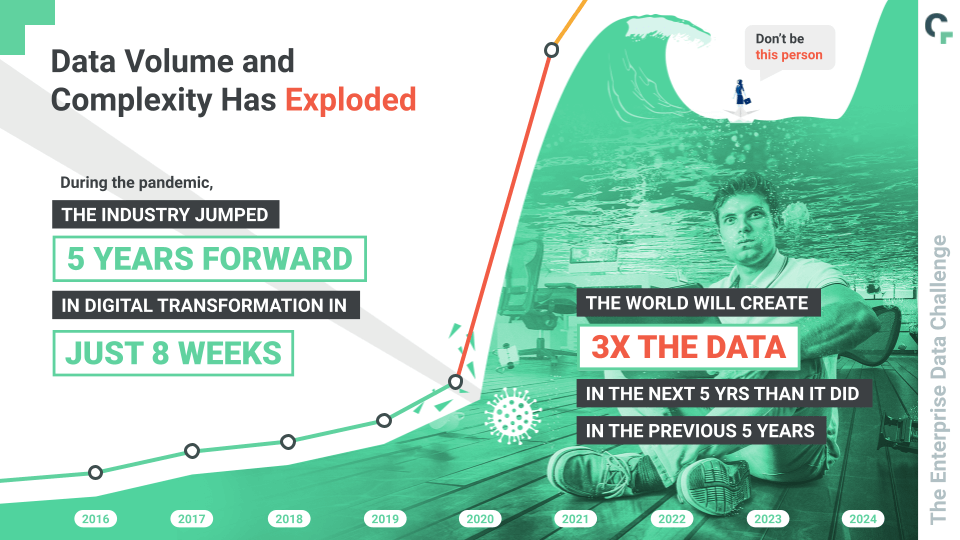
As martech matured from a new-fangled way to reach customers into a ubiquitous, budget-consuming behemoth over the past 20 years, it leaned heavily into collecting all of the data. Stuffing data warehouses with everything a brand could collect on a user became the norm — as did subscribing to any SaaS that promised more data, better experiences, and richer conversions.
Thus, SaaS and the data it collects has entered the age of the (data) sprawl.
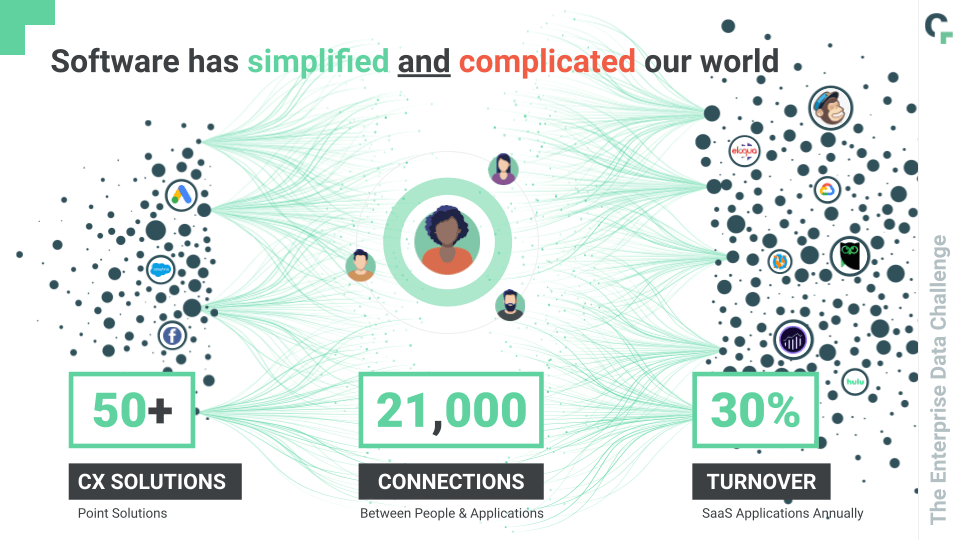
Data sprawl means insights get further away and organization goes out the window. It leads to the current, siloed state of many data-driven organizations — which fail to get data-fuel from any silo except their own. The fact that data can be both sprawling and siloed could seem at odds, but reality has shown us otherwise.
And when data is expanding, yet stuck inside rigid, impermeable containers, how can it be measured with any level of trust? Any measurement would only make sense within that bubble, and wouldn’t take into account external factors or the perspectives of other teams.
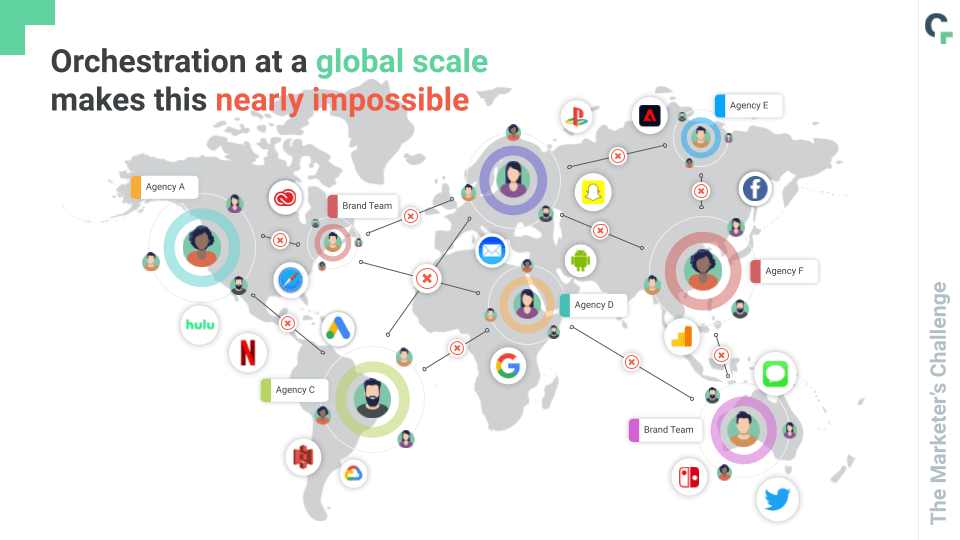
Now, with 2022’s measurement upheaval, even data within the same silo — say, a marketing or customer experience department — is segmented even further between walled gardens. Or, in the case of cookies and individual IDs, no longer being collected at all. How can that be overcome?
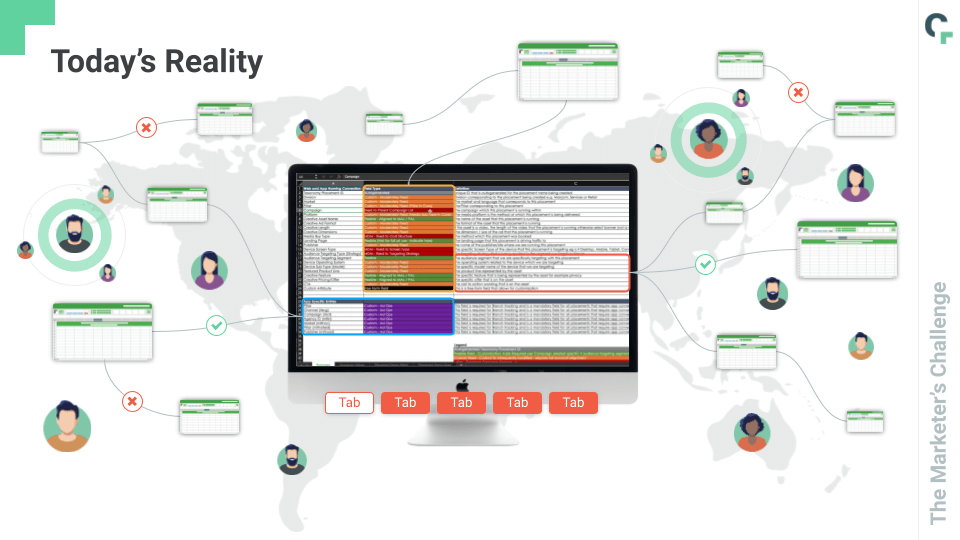
Managing the data-about-the-data, or metadata, becomes crucial. Metadata management is the practice of taking control of the ways in which data is structured, described, and understood. When data is considered at its metadata level, it can begin to be connected to other, seemingly disparate data.
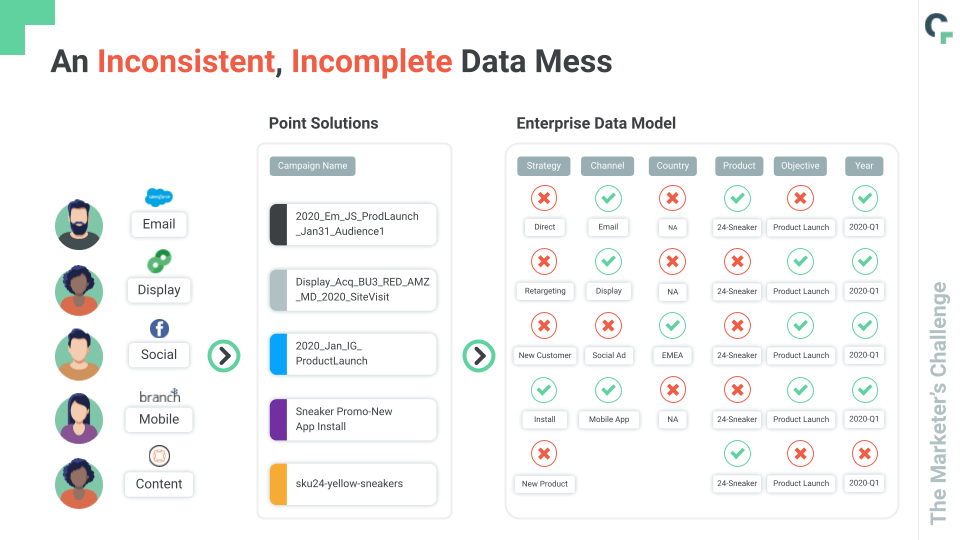
Does that sound complex and time-consuming? It absolutely can be.
Unless every SaaS and every silo speaks the same data language.
Enacting data standards brings a data organization together in a common, accessible, flexible, rich data language easily understood by every team — because it contains common elements and connective keys. When data standards are defined and activated, they connect people, technology, and their data in cross-functional and universally understood ways.
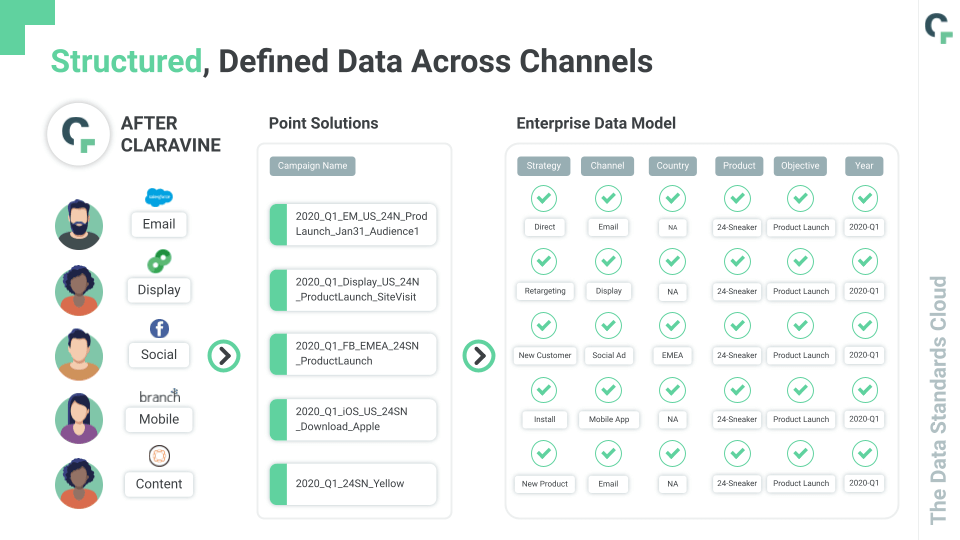
And that leads to data integrity, which creates a common thread you can follow around and between walled gardens to conquer 2022’s measurement challenges (and whatever comes next).
